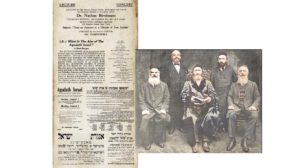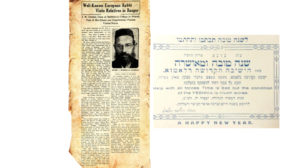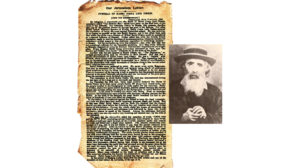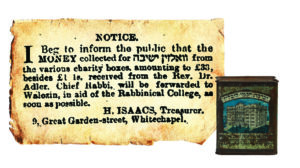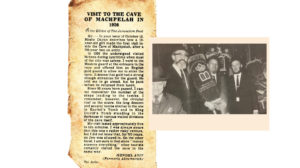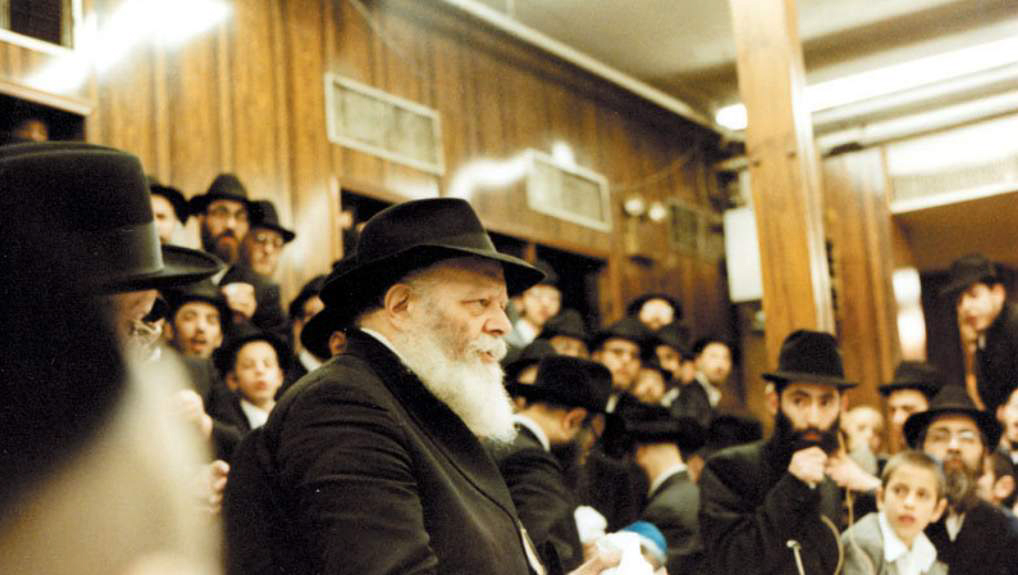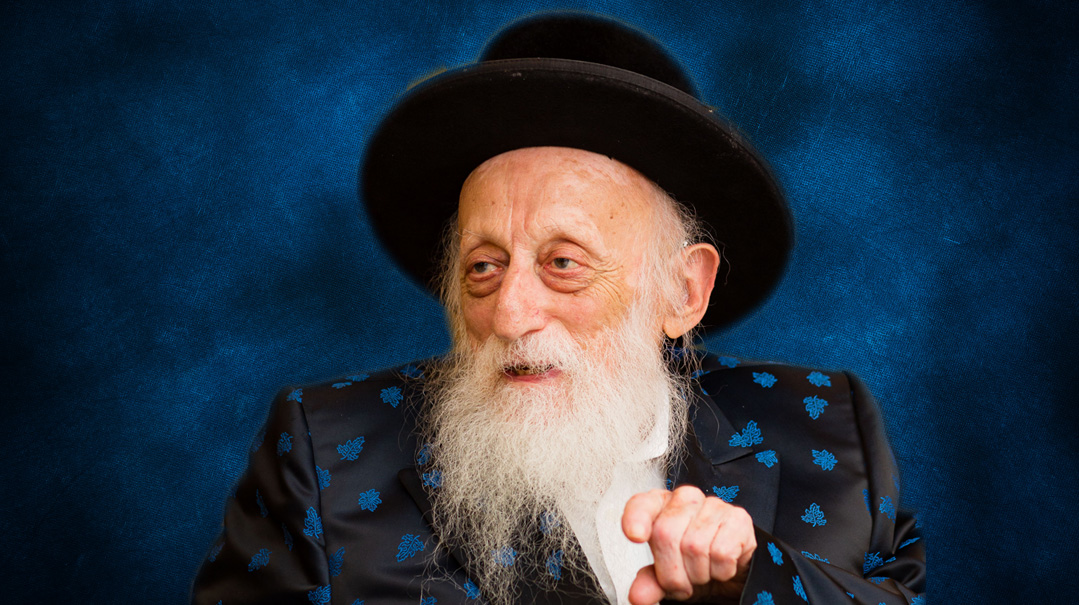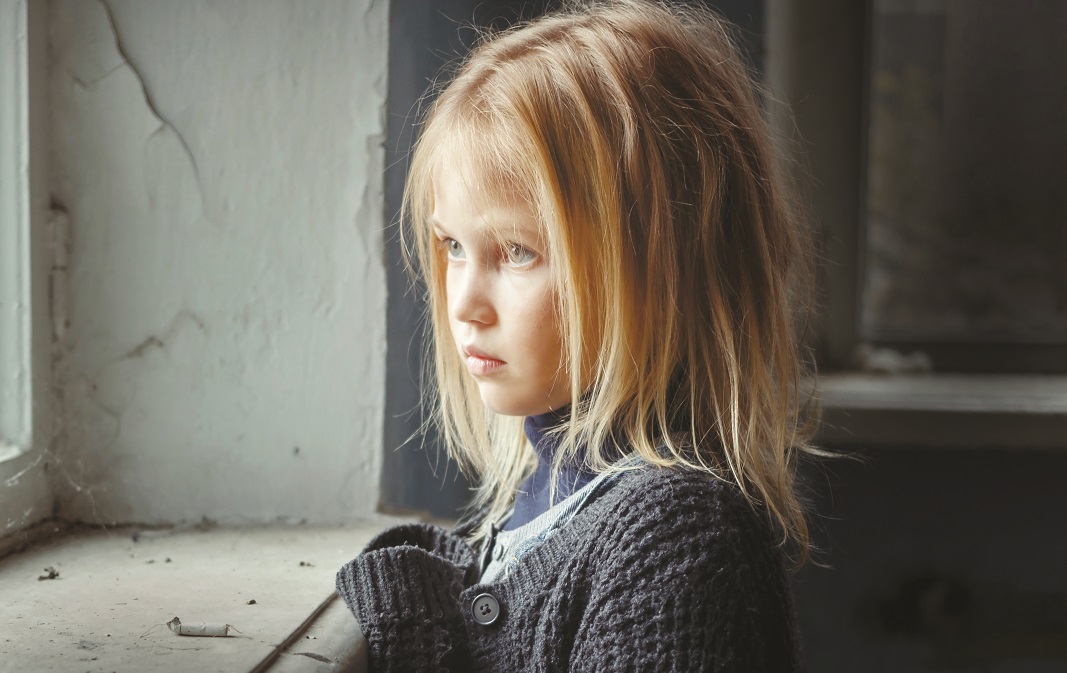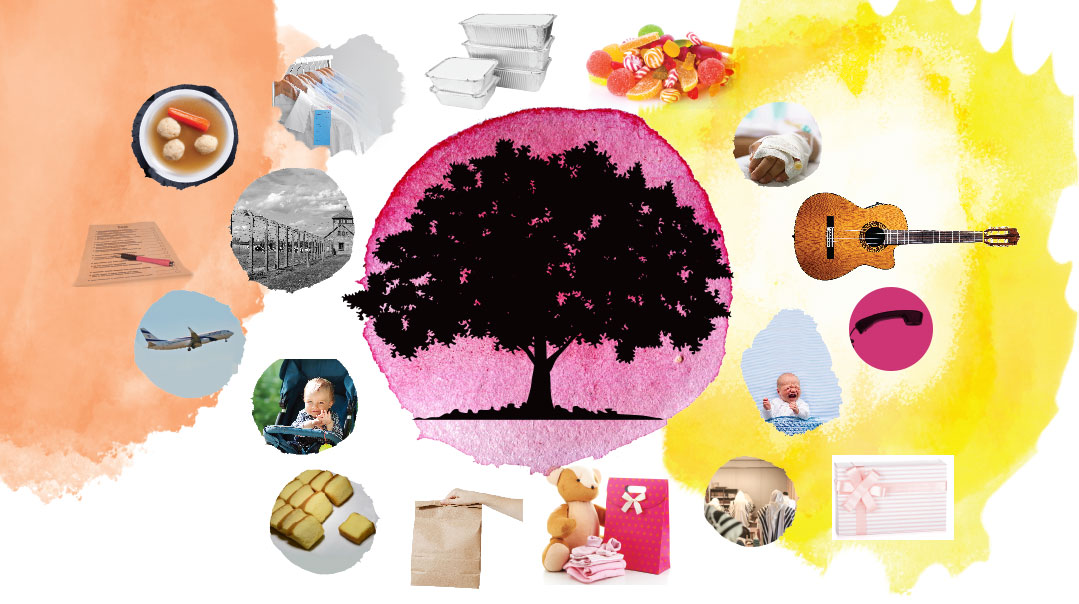Going Back, Looking Forward
| July 24, 2019On trips to Poland, the next generation returns, remembers, and rebuilds. What do they seek in tiny Polish hamlets, forgotten cemeteries, and crematoria gone cold?
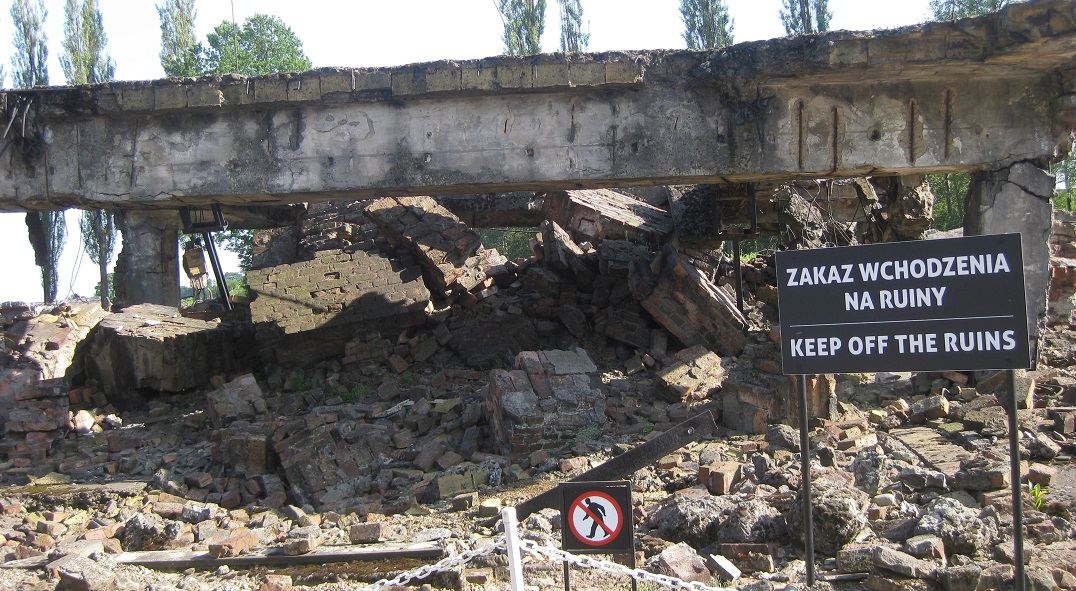
The Museumification of Auschwitz
by Chaya Sara Oppenheim
E
verything was gray when I landed in Warsaw, Poland. The sky was gray, the airport was gray, the tarmac was gray. I wasn’t surprised. I grew up listening to Holocaust stories, and my familiarity with the black-and-white photographs from the previous century had discolored my view of Eastern Europe.
I didn’t need to tell the officer at border control the reason for my visit; after seeing me, he already knew. For one week, I’d be traveling with about 60 other Bais Yaakov seminary girls on the Nesivos trip throughout Poland, visiting the places where our great-grandparents had lived before being brutally murdered by the Nazis.
Over the next few days, we traveled along the long and winding highways, through the cities and mountains and villages of Poland. Our first stop was the Warsaw Ghetto. Only a broken piece of wall and demarcations on the sidewalk outlining the ghetto’s circumference provided evidence that this was once an open-air prison incarcerating Jews.
The Warsaw cemetery we visited was a forest with more than 250, 000 individual gravestones and several roped-off mass graves, dug when those who starved to death in the ghetto outnumbered those who could bury them.
We ventured into the mountains, where leaders of chassidus are known to have gained inspiration from the surrounding nature, and visited a smaller forest at the edge of the small town of Tykocin. In this forest Jews had been pushed off trucks and gunned down into massive pits. Standing among the tall, red leafy trees and listening to the birds chirping, I could only think that the trees had taken on the color of the blood of the innocent who had been murdered there.
We visited the camps of Majdanek, Plaszow, Treblinka, and Auschwitz-Birkenau. While many people visit the concentration camps and come away with a deeper appreciation of the catastrophic tragedy of the Holocaust, when I visited the infamous Auschwitz-Birkenau, I left deeply unsettled. The death camp responsible for the murders of 1.1 million people had been transformed into a museum.
There were many locations we visited that had memorials whose accuracy and appropriateness were questionable. From among those, Auschwitz-Birkenau Museum and Memorial is the most popular site for tourists, yet after visiting, I couldn’t help but feel that the renovations done at the site of Auschwitz allow for the most egregious sort of forgetting possible.
Memorializing the Holocaust is difficult. With passing time and fewer survivors, we grapple with the dilemma of wanting the world to remember what happened, and the unanswerable question of how to present what we want to be remembered. Our generation will soon be left with videoed interviews, photographs, and history books — but no living survivors to connect the dots between them.
Then we’ll have to confront larger issues. How will we, Jewish grandchildren of survivors, be able to experience a connection to the Holocaust when two-thirds of our American millennial peers don’t know what Auschwitz is? How can I, as part of the Jewish community, feel justified in my desire to hold an opinion on how Auschwitz should be presented to future generations when I wasn’t exposed to the experience?
The words of Rabbi Yossi Cohen, one of the guides on our trip, rang in my mind: You can go to a place and still never have been there. From what he said, I understood that it would be up to me to assign significance to the places I was visiting; the places wouldn’t grant me meaning on their own.
While Auschwitz-Birkenau is universally viewed as a symbol of genocide, the Auschwitz museum committee have constructed their own definition of meaning and imposed that definition over the site. This weakens the validity of those who push for their grandparents’ stories to be remembered.
According to the official website, the plan for Auschwitz after the Holocaust was: “to present the extermination of the people conquered by the Germans and to highlight the fact that the German atrocities were committed on a mass scale, while steering clear of ‘the macabre’ and using only suitable visual elements.”
Aside from noting Poland’s blatant attempt at pushing any blame of their collaboration in the Holocaust onto the Germans, another question begs to be answered. If the “macabre” is “steered cleared of” and only “suitable elements” are shown — suitable to whom, mind you — then what would we be seeing?
As our bus pulled into the paved parking lot next to the grounds of Auschwitz, and we disembarked, the first thing I noticed was the smell of food. Inside the ticket booth, a vendor was selling fresh pizza, hot dogs, and ice cream. Volunteers working at the site distributed audio guides at the main entrance, and signs posted along the green grass near leafy hedges pointed us in the direction the museum committee wanted us to take: under the remodeled “Arbeit Macht Frei” archway and into the “museum.” Distracted by the museum, visitors can easily forget there was no grass in Auschwitz. If there had been, survivors relate, we would’ve eaten it.
I stood in front of the “Arbeit Macht Frei” sign, unable to cross beneath it. I watched as tourists took photographs under the sign and thought about how my great-grandparents had passed under the original version before being sent on to the gas chambers. How could these visitors smile as they took photos? How could they feel like Auschwitz was only… a museum?
Auschwitz is composed of several rows of brick buildings that have now been turned into display centers. During the Holocaust, these blocks were used to house prisoners — nearly 1,200 of them — and were bare of beds, indoor bathrooms, and heating, despite the freezing winters. Today, these renovated blocks have lighting and air-conditioning, the walls have been freshly painted, and the flooring is repaired or replaced wherever necessary.
Instead of showcasing the conditions of the camp, the walls of the barracks are covered with enlarged photos and maps, outlining Germany’s takeover of Poland and the start of World War II. Some of the other blocks contain massive glass displays featuring stacks of suitcases, heaps of tangled wire glasses, piles of worn shoes, brightly colored dishes, talleisim, and mounds of shorn hair.

I found my great-grandmother’s suitcase among the piles, her name a faded white against worn black leather. She’d labeled her bag so she’d be able to find her luggage afterward. But for her, there was no afterward.
Another exhibit contained dozens of empty Zyclone B canisters artfully arranged behind glass next to a miniature reproduction of the gassing procedure, complete with little clay figures. As a visitor, standing in a block in Auschwitz, looking at a sanitized depiction of the atrocities, I couldn’t imagine the victims’ screams or smell their fear.
But how could we feel anything? We were made to shuffle from one exhibit to another, exactly as the museum scripted. We were wearing comfortable sneakers and holding water bottles. Our siddurim and Tehillim were securely in our bags, and we didn’t have to worry they’d be confiscated. The buses were packed with sandwiches and fruit and snacks, and we didn’t even walk the two miles between Auschwitz I and Auschwitz II. Looking around at the remodeled barracks, hardly noticing the air-conditioning that was making our visit bearable, a little voice finds an ability to judge, to mistakenly imagine how we could’ve handled the conditions. After all, the barracks didn’t seem that bad.
The museum-like quality of Poland’s sites had followed me throughout the trip. At Radegast, a train station that transported Jews from Lodz to Chelmno and Auschwitz, a sample cattle car remains on the tracks for tourists to visit. On the outside of the cattle car, a small sign is posted saying: “For security reasons, a maximum of 20 persons are allowed to stay in the railway car at the same time.” I looked at that sign, hardly believing the irony — as though Nazi officers didn’t try to crowd in as many people into these cattle cars, as though they weren’t too tightly packed in to sit, much less breathe.

In Auschwitz, I stood in front of the brick ovens used for cremation and looked at the small ideogram forbidding the lighting of memorial candles. As though fire wasn’t used to deny a proper burial to the murdered innocent.
We walked to a small area with leafy trees at the edge of Birkenau where Jews were sent to wait in the shade until the gas chambers were emptied from the previous load. Another ideogram forbade entry to dogs. As though the Nazis didn’t use their German shepherds at this very spot to intimidate their victims.
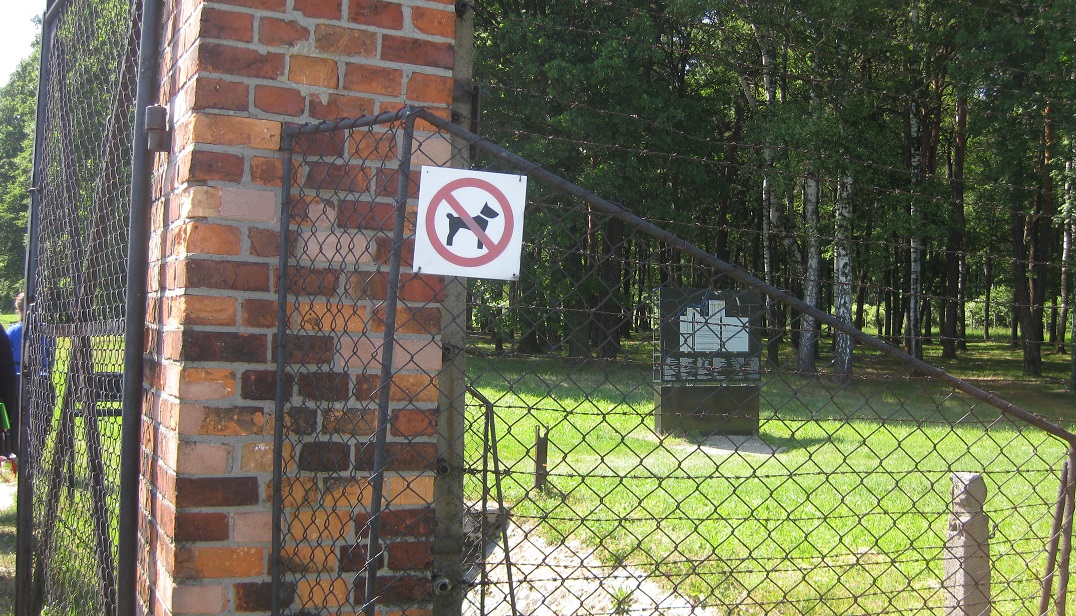
To me, these signs contributed to the museumification of the Holocaust, allowing people to think there’s no harm in taking a smiling selfie at the foot of a Birkenau watchtower .
How can we justify visiting a place determined to portray the Holocaust as a distant historical event whose horrors can be glossed over? How can a place whose entrance was once called the “Gate of Death” now hold a bookstore, restrooms, a snack stand, and information guides? How often do we say that there are no words to describe the Holocaust, but then shelves and shelves of bound pages in Birkenau’s bookstore manage to find the words, after all?
I looked around at the other visitors and tour guides and wondered where their great-grandparents were while mine were sent to the ovens. It was hard for me to understand how people can live so close by to these sites of genocide and live their everyday lives when the air is tainted from having carried the smell of burning bodies.
To the non-Jews visiting Auschwitz, our group was also part of the museum’s display. We were watched, and in a very weird sense, the place was acknowledged to be our place. A group of Eastern European tourists reached the gas chambers before I did, but when I approached, they stepped back and motioned for me to go first, as though it was my right or privilege to enter before they did.
The renovators at Auschwitz have whitewashed the walls and reorganized objects in an inaccurate display. They took that which should be incomprehensible and hung maps and short explanations onto barrack walls, making the information intellectually digestible. While the leaders of the Nesivos program tour delivered direction and perspective, not every tourist who visits these locations is accompanied by that.
The fact that Auschwitz has been museumified only further strengthens my resolve that the stories of the experiences of my great-grandmother and so many others who walked through Auschwitz’s gate must not be forgotten.
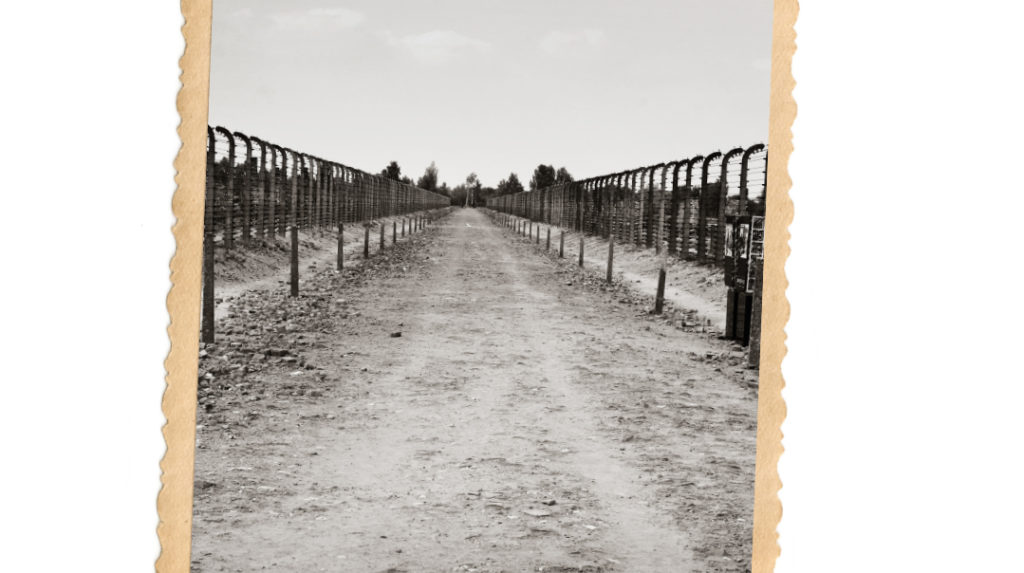
To Fill Their Shoes
By Rebbetzin Tamar Sokol
In Eretz Yisrael, perek 16 of Tehillim is recited at a levayah, before we escort the body to its earthly resting place.
“Michtam l’Dovid, shamreini Keil ki chasisi vach — Protect me, Hashem, for I have taken refuge in You” (Tehillim 16:1).
It’s followed by the shattering of a shard of stone, and the recital of the words, “Hapach nishbar v’anachnu nimlatnu — The snare broke and we escaped” (Tehillim 124:7).
This becomes the leitmotif for the first trip I take to Poland with a group of my students.
In Warsaw, we make our way across a city in which the whisper of history has been silenced. The buildings are part high-rise glass, part utilitarian Communist structures. Thoroughly modern young residents stroll and bike to work. The teeming, vibrant shtiblach, the humble homes of devoted Jews, the marketplace, the kehillah buildings; even the Bund, the Socialist intelligentsia, and the Yiddish Theatre are all gone without a trace, leveled in The Destruction.
Inside the ancient cemetery walls, time stands still. The silence is deep as we make our way down the cracked lanes, beneath thick trees heavy with foliage. In the beis hachayim two worlds meet: Now and Forever.
We approach an ohel, cold and bare. Here lies the Netziv, who was nearly apprenticed as a child to a craftsman, but ultimately lived his life to be able to answer the Heavenly query: Where is the Eimek HaShe’eilah, his masterful peirush? With him lies his grandson, the great Rav Chaim Brisker, who merged brilliant analytical precision in learning with extreme kindness and empathy. After the Great Fire of 1895, he didn’t sleep in a bed until every resident of Brisk had a bed of his own.
Two giants, who resided in This World, but whose reality was the World of Eternity.
“Hashem menos chelki v’kosi — Hashem is the portion of my inheritance and my cup” (Tehillim 16:5). Whatever possessions and pleasures shall be mine on earth — what lends them their true significance is not their value, but Hashem, Himself (Rav Hirsch).
In Lublin, memory stirs as we draw up in front of Yeshivas Chachmei Lublin. The imposing face of the building is precisely like the black-and-white photographs of its dedication in 1930; we see it in airbrushed color in the receding daylight. The balconies are now bare of visiting dignitaries, the stairwells devoid of lively bochurim, the imposing beis medrash empty of mispallelim.
We offer up our tefillas Minchah in this hallowed space where over 200 bochurim lived and learned and davened and heard shiur from Rav Meir Shapiro ztz”l, adding to the 200 blatt Gemara they’d mastered as a requisite for their acceptance.
Yeshivas Chachmei Lublin isn’t here. Though we can almost hear the footfall of bochurim up and down the worn stairs, hands running along the banister, this edifice is a mere shell, like the ohel that houses the Netziv and Rav Chaim Brisker. Yeshivas Chachmei Lublin was transplanted to Bnei Brak by Rav Wosner ztz”l, where it flourishes. Rav Meir Shapiro left This World, childless, at 46 years old, but he lives in every corner of the Jewish globe where Daf Yomi is learned.
“Chavalim naflu li bani’im, af nachalas shafrah alai — Thus my fate was pleasant, and also my inheritance was beautiful to me” (Tehillim 16:6).
En route from Lublin to Majdanek, crimson flowers dot a carpet of grass along the modern rural road. Incongruously, a Pepsi ad proclaims: “Live Now.”
In Majdanek, we enter a room lined with shoes.
I have many memories of shoes.
I remember Imelda Marcos, former first lady of the Philippines, whose shoe collection — whether numbering 3,000 (as reported) or a mere 1,060 (as she protested), bespoke a life of opulence and indulgence — is now reduced to ruin by termites, weather, and mold. Her shoes are gone forever.
I have my own shoe association, as well. When I lost my only brother just after my 18th birthday, processing his few possessions was traumatic. His shoes remained in our house while my father researched the tradition not to donate the shoes of the deceased.
Shoes, explains the Nefesh Hachaim, are a metaphor for the body. Both serve as a shell, a mere container, protecting and supporting the inner being as it traverses This World, playing no more than a supporting role. Only the smallest part of the person occupies the shoe; our neshamos are far too great to contain.
Facing the Burning Bush, Moshe Rabbeinu is told to remove his shoes. Here, the shell is extraneous, obstructive. Here, one may connect to the Eternal, shedding the case that only obscures vision, limits connection.
The eerie stillness in Majdanek evokes the feeling that one ought to remove one’s shoes here, on this blood-drenched, ash-strewn earth hallowed by mesirus nefesh, upon which Jews relinquished the temporary shell for the Eternal. Only the shoes remain, decaying. The pile of shoes forms a pyre; bodies burned, souls soaring upward. The snare broke, and we escaped.
“Ki lo ta’azov nafshi lishol — For You will not abandon my soul to the grave” (Tehillim 16:10).
In Lancut, we behold a magnificent castle once owned by the Potocki family, to which the famed Ger Tzedek of Vilna belonged, and a glowing jewel of a shul protected by their benevolence. Although purchased over a century after the Ger Tzedek’s martyrdom, the palatial grandeur gives us an inkling of what Count Potocki promised his son, Valentin, if he would abandon Judaism. Avraham ben Avraham merely laughed. Playthings! (Shoes?) What compares to the Eternal munificence I now possess?
In the unlikely marriage between body and soul, “You may bring her all the pleasures of This World, but they will be of no value to her, for she hails from another, Upper World” (Mesillas Yesharim, perek alef). “She lives for Eternity. All of the pleasures of This World cannot compare to a whiff of the sweetness of the Next” (Pirkei Avos, 4:17).
In Krakow, memory not only stirs, it sings, it sways, it steps just behind us. We walk the cobbled streets of Kazimierz, almost hearing the footsteps of the Bach and the Megalei Amukos, the Tosafos Yom Tov and the Rama, Frau Schenirer, and Pearl Benisch. Might not that be the sweep of Judith Rosenbaum-Grunfeld’s skirts, turning the corner of Dietla and Stanislawa?
On Shabbos we daven in Harav Isaac Reb Yekel’s shul, and centuries of light illuminate our minyan. We enter Stanislawa 10 and expect a Laychu or a Chanka there to greet us. We walk along the Vistula and imagine floods of chassidim streaming to Tashlich.
Here, a different shoe melody swells: “Ma yafu pe’amayich bane’olim bas nadiv — How lovely are your feet in shoes, daughter of nobility” (Shir Hashirim 7:2). Here, Jews lived for centuries with grace and dedication and allegiance and love, living lives of spirit, synthesized magnificently with their mortal existence, never forgetting the body’s supporting role. Here, language, dress, livelihood, and conversation were all directed to the Will of Heaven.
Malka Aharonson, talmidah of Bais Yaakov, remembers: “With us, there was ardent avodas Hashem. There was the fire of ‘Serve Him in Joy.’ ” Here is the loveliness of symmetry: feet squarely planted in shoes, mind and heart on the Upper and Inner Worlds.
“Lachen samach libi… af b’sari yishkon lavetach, Therefore, my heart is glad… my flesh will also rest in safety” (Tehillim 16:9).
We visit Plaszow, burial site of Sarah Schenirer. She left This World at 51 years old, childless. With an eye to Eternity, she infused young girls with love of Torah and yiras Shamayim. She sowed the seeds that enabled her talmidos to see beyond their own “I,” to know their inner value, to stand firmly on holy ground, even at their journey’s end. Those who survived replanted those seeds in the generation that would emerge from desiccated bones. We live.
Tears flow as we sing the song, “Vetaher libeinu l’ovdecha b’emes.” Purify our hearts to serve You in truth.
In Warsaw and Lublin and Krakow, we note myriad matzeivos in the batei chayim marked “ha’ishah hatzenuah.” My students are awed by this testimonial to women who harmoniously synchronized their outer and inner worlds. Adorned in nobility and refinement, they made the shoe fit so that it was both lovely and comfortable. Saddened by the dissonance of our worlds, by the distracting demands of the body, I am heartened that my girls can imagine no higher praise.
Standing on the platform in Auschwitz-Birkenau — from which Yidden were sent to life or to the Afterlife — is a deeply powerful experience. Many of the sonderkommando, charged with handling the bodies, were yerei Shamayim. They performed their duties while reciting Mishnayos by heart. As Rav Mottel Pogramansky said, when one is stripped of everything, “Nohr der Ribbono shel Olam un du.” There’s miniscule, finite, sightless me and Ineffable, Eternal, Omniscient You. We know nothing.
In the camps, Jews learned they could accomplish the unimaginable. When his cement train went off track while performing slave labor in Mauthausen, Rav Yisroel Spitzer was told by the Nazi overseer, “Put it back. If you’re a Jew, you can.” And he did, lifting up a cement-filled train carriage.
The Klausenberger Rebbe, challenging a philanthropist who committed to, “Try, if he could,” said that before the war, he never carried anything heavier than his tefillin bag. In Auschwitz, he carried tons of cement vast distances. Connection to the Omnipotent renders us capable of the impossible.
“Ki lo sa’azov nafshi lishol — For You will not abandon my soul to the grave, nor will You suffer Your devoted one to see destruction” (Tehillim 16:10).
We conclude our trip on the day of the martyrdom of Reb Chanina ben Teradiyon. Wrapped in a sefer Torah and set afire, he cried, “The parchment is burning; the letters are soaring aloft.”
Returning from the elevated encounters on my trip, I attempt to bring into my daily life the dazzling clarity that every moment, every thought, word, and action, earns Eternity. Not only my Ne’ilah, or my tefillos at the Kosel, but my Minchah on a regular weekday in the corner of my living room reverberates Forever.
I crave to transport the enthusiasm, the bubbling joy, the love of Torah and mitzvos with which so many of the kedoshim lived. I undertake to challenge my limitations, to discover that I can. In Rav Hutner’s inimitable words,“Gevaldt! Exchange not a permanent world for a fleeting, transitory one.”
When we’ll be oleh regel, we’ll approach the Beis Hamikdash without shoes. The Kohanim will serve barefooted. In that exalted place, as at the Burning Bush, no barrier will obstruct our existence from the Almighty.
I wish and wait and yearn to experience the Yom Tov I pray Tishah B’Av will be this year. To experience the promise: Al Edom eshlach na’ali, upon Edom I shall cast my shoe, when our feet will stand, bishaarayich Yerushalayim, at your gates, Jerusalem, shoeless.
“Todiaini orech chayim sova smachos es Panecha, ne’imos b’imincha netzach — You make me know the path of life, the fullness of joy in Your presence, pleasantness from Your right Hand, Eternally.”
Mrs. Sokol is menaheles of Ateres Bnos Yerushalayim seminary. She’s deeply grateful to Nesivos Tours and to Rabbi Ilan Segal for the masterful Legacy Tour, which served as the inspiration for this article.
Journey to Inspiration
As told to Rochel Samet by Rabbi Yehuda Fried
I
t all began about 20 years ago, when a friend of mine in an American-Israeli yeshivah went on a organized trip to Poland. He had signed up hoping to gain inspiration and a deeper understanding of the Jewish history — and inferno — that took place there, but he returned disillusioned.
“The hashkafos they were giving over weren’t in sync with mine, and the dikduk halachah left much to be desired,” he told me afterward. Then he added, “Someone has to start organizing such trips with a Torah orientation….”
And that was where the idea of Nesivos sprouted.
We planned a tour: Pesach bein hazmanim, a trip to Poland for yeshivah bochurim. I spent a full six months doing research about the places we’d be visiting. I collected and scoured articles and created an itinerary designed not just to inform, but also to uplift. I didn’t want to repeat my friend’s unfortunate experience. I couldn’t focus solely on the facts and figures of the Holocaust; how many people were killed, and in what gruesome ways. I wanted the participants to leave with a Torah perspective and a feeling of inspiration.
Of course, there was also the technical aspect, and that was huge. The logistics of organizing flights, accommodation, inspirational speakers, transportation — it was an overwhelming task, and it was only afterward that I realized how powerful the trip really was, and what an educational and transformative experience it could be.
Back then, the idea of trips to Eastern Europe was still new. Some people were critical of the idea, especially because it meant supporting the tourist economy of a country that happily assisted in mass-murdering its Jewish citizens just 60 years earlier. But we spoke to gedolim, and we were told that’s not our cheshbon. Our job is to help people gain knowledge and inspiration, and that’s what we strive to do, with every trip we create.
Now, we organize many trips for bochurim and seminary students, sometimes independently and sometimes working with a specific yeshivah or seminary to create an itinerary and provide tour guides for their own trips. And although I’ve been working in this field for over 20 years, every trip has its own story.
On some of our Bais Yaakov trips, we have a few mothers join in — that’s special. On a trip that focuses on our link to previous generations, the tangible mother-daughter connection adds another dimension to the experience. On rare occasions, we’re zocheh to have three generations join: a Bais Yaakov student, her mother, and her grandmother — a survivor of the camps. It was an incredible experience for my wife, who joined one such tour, to visit Auschwitz-Birkenau with a survivor of the atrocities that took place there.
The girls walked through the infamous gates in silence, overwhelmed by the hugeness of what took place there — but the survivor gave them strength. She radiated positivity and chizuk, even as she led the students to “her” bunk, described some of what she experienced there.
The walk from the train tracks at the entrance of the camps to the crematorium is very long. It’s mind-boggling how those people who survived the train ride to Auschwitz with barely any food or water could walk that distance! And the survivor, a grandmother many times over, was leading the way with a quick stride that had most of the group struggling to keep up, leaving them with a powerful image of victory and survival.
It’s not all been smooth sailing. Running a business for 20 years comes with natural ups and downs, the crossroads and challenges. Sometimes it’s technical, like the supplies truck being held at a border right before a tour. Other times, it’s more complex.
But I get encouragement by looking back at the feedback we’ve received over the years from participants in the trip. Letters; e-mails; the girls from irreligious backgrounds who want to keep Shabbos, marry Jewish; the girls from “FFB” homes who felt a new connection to their mesorah and Yiddishkeit after coming on the trip. The feeling of wanting to build a home of Torah, to fulfill the wishes and dreams of the millions of martyrs, gives them a sense of responsibility. The inspiration is enormous, and that keeps us going.
Because it’s not just about destruction and horrors — it’s about being part of a beautiful legacy, about a chain of survival. It’s about the rich history of Poland, its golden era of Torah learning, and the gedolim who lived there. And it goes hand in hand: In one day we can visit a concentration camp and then drive on to Lizhensk and daven at the kever of Reb Elimelech.
We’ve taken thousands of students on these trips, and they walk out of the death camps inspired, not depressed. Yes, there were unspeakable atrocities that took place on this soil. But it’s also like a mizbeiach, a place where thousands walked to their deaths saying Shema Yisrael. And when the grandchildren and great-grandchildren of survivors — every trip has some — gather on the train tracks, and together make the brachah of she’asah nissim la’avoseinu bamakom zeh, the tears that flow hold a sense of triumph.
One of the most incredible experiences we had took place ten years ago, on a trip to Belarus. Together with a large group of bochurim, we visited Volozhin, Mir, and Radin, and were on the way to Grodno, where Rav Shimon Shkop is buried. We planned to daven there before heading on to Poland, our next destination.
We arrived in the late afternoon. As our tour bus parked near the beis olam of Grodno, a van pulled up, and to our surprise, a man in full chassidic garb jumped out. He was just as surprised — and also delighted — to see us.
He explained that he was from the Atra Kadisha, an organization that works to protect and preserve Jewish cemeteries in Europe, and just that day he’d been informed that the Russians had dug up a cemetery in a nearby town. The remains of those who had been interred there were in a heap on the side of the road. This chassid packed all the bones in a van to rebury them in the Grodno cemetery.
The problem was that he was alone. It was getting dark, and the Russian van driver was already impatient. He had no idea how he was going to rebury all the bones alone, and was overjoyed to see a group of 30 bochurim arrive at precisely the same time as him.
Of course, we helped him to dig a kever and rebury the remains. We held a levayah, said Kaddish with a minyan, and one of the men on the trip donated his tallis to wrap the bones. (Shortly thereafter, this man’s three older daughters all became engaged.)
We don’t always see open instances of Hashgachah pratis. But when we do, it gives an extra insight, reminding us of the truth, that no matter how dark our history has been, and what persecution the Jewish Nation has been through, a light shines on, reminds us of our eternity, our faith, and Hashem’s boundless love for His people.
The Museumification of Auschwitz
by Chaya Sara Oppenheim
E
verything was gray when I landed in Warsaw, Poland. The sky was gray, the airport was gray, the tarmac was gray. I wasn’t surprised. I grew up listening to Holocaust stories, and my familiarity with the black-and-white photographs from the previous century had discolored my view of Eastern Europe.
I didn’t need to tell the officer at border control the reason for my visit; after seeing me, he already knew. For one week, I’d be traveling with about 60 other Bais Yaakov seminary girls on the Nesivos trip throughout Poland, visiting the places where our great-grandparents had lived before being brutally murdered by the Nazis.
Over the next few days, we traveled along the long and winding highways, through the cities and mountains and villages of Poland. Our first stop was the Warsaw Ghetto. Only a broken piece of wall and demarcations on the sidewalk outlining the ghetto’s circumference provided evidence that this was once an open-air prison incarcerating Jews.
The Warsaw cemetery we visited was a forest with more than 250, 000 individual gravestones and several roped-off mass graves, dug when those who starved to death in the ghetto outnumbered those who could bury them.
We ventured into the mountains, where leaders of chassidus are known to have gained inspiration from the surrounding nature, and visited a smaller forest at the edge of the small town of Tykocin. In this forest Jews had been pushed off trucks and gunned down into massive pits. Standing among the tall, red leafy trees and listening to the birds chirping, I could only think that the trees had taken on the color of the blood of the innocent who had been murdered there.
We visited the camps of Majdanek, Plaszow, Treblinka, and Auschwitz-Birkenau. While many people visit the concentration camps and come away with a deeper appreciation of the catastrophic tragedy of the Holocaust, when I visited the infamous Auschwitz-Birkenau, I left deeply unsettled. The death camp responsible for the murders of 1.1 million people had been transformed into a museum.
There were many locations we visited that had memorials whose accuracy and appropriateness were questionable. From among those, Auschwitz-Birkenau Museum and Memorial is the most popular site for tourists, yet after visiting, I couldn’t help but feel that the renovations done at the site of Auschwitz allow for the most egregious sort of forgetting possible.
Memorializing the Holocaust is difficult. With passing time and fewer survivors, we grapple with the dilemma of wanting the world to remember what happened, and the unanswerable question of how to present what we want to be remembered. Our generation will soon be left with videoed interviews, photographs, and history books — but no living survivors to connect the dots between them.
Then we’ll have to confront larger issues. How will we, Jewish grandchildren of survivors, be able to experience a connection to the Holocaust when two-thirds of our American millennial peers don’t know what Auschwitz is? How can I, as part of the Jewish community, feel justified in my desire to hold an opinion on how Auschwitz should be presented to future generations when I wasn’t exposed to the experience?
The words of Rabbi Yossi Cohen, one of the guides on our trip, rang in my mind: You can go to a place and still never have been there. From what he said, I understood that it would be up to me to assign significance to the places I was visiting; the places wouldn’t grant me meaning on their own.
While Auschwitz-Birkenau is universally viewed as a symbol of genocide, the Auschwitz museum committee have constructed their own definition of meaning and imposed that definition over the site. This weakens the validity of those who push for their grandparents’ stories to be remembered.
According to the official website, the plan for Auschwitz after the Holocaust was: “to present the extermination of the people conquered by the Germans and to highlight the fact that the German atrocities were committed on a mass scale, while steering clear of ‘the macabre’ and using only suitable visual elements.”
Aside from noting Poland’s blatant attempt at pushing any blame of their collaboration in the Holocaust onto the Germans, another question begs to be answered. If the “macabre” is “steered cleared of” and only “suitable elements” are shown — suitable to whom, mind you — then what would we be seeing?
As our bus pulled into the paved parking lot next to the grounds of Auschwitz, and we disembarked, the first thing I noticed was the smell of food. Inside the ticket booth, a vendor was selling fresh pizza, hot dogs, and ice cream. Volunteers working at the site distributed audio guides at the main entrance, and signs posted along the green grass near leafy hedges pointed us in the direction the museum committee wanted us to take: under the remodeled “Arbeit Macht Frei” archway and into the “museum.” Distracted by the museum, visitors can easily forget there was no grass in Auschwitz. If there had been, survivors relate, we would’ve eaten it.
I stood in front of the “Arbeit Macht Frei” sign, unable to cross beneath it. I watched as tourists took photographs under the sign and thought about how my great-grandparents had passed under the original version before being sent on to the gas chambers. How could these visitors smile as they took photos? How could they feel like Auschwitz was only… a museum?
Auschwitz is composed of several rows of brick buildings that have now been turned into display centers. During the Holocaust, these blocks were used to house prisoners — nearly 1,200 of them — and were bare of beds, indoor bathrooms, and heating, despite the freezing winters. Today, these renovated blocks have lighting and air-conditioning, the walls have been freshly painted, and the flooring is repaired or replaced wherever necessary.
Instead of showcasing the conditions of the camp, the walls of the barracks are covered with enlarged photos and maps, outlining Germany’s takeover of Poland and the start of World War II. Some of the other blocks contain massive glass displays featuring stacks of suitcases, heaps of tangled wire glasses, piles of worn shoes, brightly colored dishes, talleisim, and mounds of shorn hair.
I found my great-grandmother’s suitcase among the piles, her name a faded white against worn black leather. She’d labeled her bag so she’d be able to find her luggage afterward. But for her, there was no afterward.
Another exhibit contained dozens of empty Zyclone B canisters artfully arranged behind glass next to a miniature reproduction of the gassing procedure, complete with little clay figures. As a visitor, standing in a block in Auschwitz, looking at a sanitized depiction of the atrocities, I couldn’t imagine the victims’ screams or smell their fear.
But how could we feel anything? We were made to shuffle from one exhibit to another, exactly as the museum scripted. We were wearing comfortable sneakers and holding water bottles. Our siddurim and Tehillim were securely in our bags, and we didn’t have to worry they’d be confiscated. The buses were packed with sandwiches and fruit and snacks, and we didn’t even walk the two miles between Auschwitz I and Auschwitz II. Looking around at the remodeled barracks, hardly noticing the air-conditioning that was making our visit bearable, a little voice finds an ability to judge, to mistakenly imagine how we could’ve handled the conditions. After all, the barracks didn’t seem that bad.
The museum-like quality of Poland’s sites had followed me throughout the trip. At Radegast, a train station that transported Jews from Lodz to Chelmno and Auschwitz, a sample cattle car remains on the tracks for tourists to visit. On the outside of the cattle car, a small sign is posted saying: “For security reasons, a maximum of 20 persons are allowed to stay in the railway car at the same time.” I looked at that sign, hardly believing the irony — as though Nazi officers didn’t try to crowd in as many people into these cattle cars, as though they weren’t too tightly packed in to sit, much less breathe.
In Auschwitz, I stood in front of the brick ovens used for cremation and looked at the small ideogram forbidding the lighting of memorial candles. As though fire wasn’t used to deny a proper burial to the murdered innocent.
We walked to a small area with leafy trees at the edge of Birkenau where Jews were sent to wait in the shade until the gas chambers were emptied from the previous load. Another ideogram forbade entry to dogs. As though the Nazis didn’t use their German shepherds at this very spot to intimidate their victims.
To me, these signs contributed to the museumification of the Holocaust, allowing people to think there’s no harm in taking a smiling selfie at the foot of a Birkenau watchtower .
How can we justify visiting a place determined to portray the Holocaust as a distant historical event whose horrors can be glossed over? How can a place whose entrance was once called the “Gate of Death” now hold a bookstore, restrooms, a snack stand, and information guides? How often do we say that there are no words to describe the Holocaust, but then shelves and shelves of bound pages in Birkenau’s bookstore manage to find the words, after all?
I looked around at the other visitors and tour guides and wondered where their great-grandparents were while mine were sent to the ovens. It was hard for me to understand how people can live so close by to these sites of genocide and live their everyday lives when the air is tainted from having carried the smell of burning bodies.
To the non-Jews visiting Auschwitz, our group was also part of the museum’s display. We were watched, and in a very weird sense, the place was acknowledged to be our place. A group of Eastern European tourists reached the gas chambers before I did, but when I approached, they stepped back and motioned for me to go first, as though it was my right or privilege to enter before they did.
The renovators at Auschwitz have whitewashed the walls and reorganized objects in an inaccurate display. They took that which should be incomprehensible and hung maps and short explanations onto barrack walls, making the information intellectually digestible. While the leaders of the Nesivos program tour delivered direction and perspective, not every tourist who visits these locations is accompanied by that.
The fact that Auschwitz has been museumified only further strengthens my resolve that the stories of the experiences of my great-grandmother and so many others who walked through Auschwitz’s gate must not be forgotten.
(Originally featured in Family First, Issue 652)
Oops! We could not locate your form.

